From the e-Mailbag
From time-to-time, the Alamo Group receives messages concerning local environmental issues. If you have thoughts to share on any of these issues, send us a message and we'll forward it to the writer.
The views and opinions expressed here are those of the authors individually and do not reflect the views or opinions of the Alamo Group or its members.
Get Valero out of butterfly festival
Want to make sure Alamo Group saw this petition and had a chance to join as a co-sponsor...
submitted by Greg H.Summer 2022: what happened and why
Any opportunity to learn from our State Climatologist John Nielsen Gammon is at the top of my priority and recommendation list! Gammon is a rare researcher looking toward the future to try to prompt us to prepare now.
Gammon and his research team have studied the likelihood of Texas entering a drought of 50 years or more, and determined the chance has drastically increased. This free public event requires pre-registration.
submitted by Rachel C.The world is on fire
I am the Audience Producer for the Houston Chronicle Opinion team. The Editorial Board recently published an editorial describing how the Supreme Court’s recent decision expands the court’s recent war on the executive branch’s rules-making authority.
The Editorial Board writes:
By hobbling the EPA just when we need it most, the court has handed responsibility for addressing climate change to just the people and institutions who’ve refused to do so for so long. Here at home, that’s officials such as Gov. Greg Abbott and the disingenuously named Texas Commission on Environmental Quality.
You can read the full version here: Editorial: The world is on fire. Supreme Court just took EPA’s fire hose.
submitted by Colleen B.Trouble in Brackenridge
Trouble in Brackenridge Park. The city is making changes to the traditional setting. They are cutting down very old trees they say are in the way of new concrete. The citizens are fighting.
It is the perfect place for involvement by the Sierra Club. I have not seen any presence, no speakers. Please get involved. Thank you!
submitted by Robin B.In search of pictures
Hey! So I grew up in the 80s with the Sierra club, I’m not working for Texas State Parks and my boss was wondering if anyone would be willing to share pictures from the state parks with the older the better and those of old CCC buildings. So long story short I was wondering if there was a way to reach out to your group and see if anyone wanted to help us out.
submitted by Jenn L.Invasive Plants: Stop the Spread, Spread the Word!
Our September general meeting features Master Naturalist Cheryl Hamilton discussing how invasive plants are wreaking havoc on our ecosystems.
Tuesday, September 20th
6:00 pm
Meeting schedule
| Informal get-to-know-you | 6:00 pm to 6:15 pm |
| Announcements | 6:15 pm to 6:30 pm |
| Featured program | 6:30 pm to 8:00 pm |
Note: This is our first attempt at a hybrid meeting. We are asking everyone to RSVP whether you are attending in-person or via Zoom. Please visit our event page and submit the RSVP form. Subsequently, you will receive an email with the information you need to join the Zoom meeting.
Zoom: link opens at 5:30 pm. To ensure admission, please join prior to the start of the featured program.
In-person: see below for additional information.
Program topic
Invasive plants are wreaking havoc on the health of our ecosystems. They cause economic or environmental harm, and harm to human health. In the San Antonio area, these plants form monocultures, exacerbate allergies, alter fire regimes, reduce biodiversity and change the hydrologic flow in our rivers and streams.
This presentation will identify the top twelve most challenging invasive plants in Bexar County. Strategies for management include prevention, identification and eradication. Removal of invasive plants and replacement with native plants is essential to restoring the biodiversity of our public and private lands. Join us to learn how to identify these plants, and what to do about them.
For a useful link: https://www.texasinvasives.org/invaders.
About our speaker
Cheryl Hamilton is a Texas Master Naturalist and an active member of the San Antonio Chapter of the Native Plant Society of Texas. A citizen scientist with the Invaders of Texas Program since 2010, Cheryl co-founded a group of volunteer citizen scientists who have eradicated more than 200,000 invasive plants from city, state and national parks in the San Antonio area. These volunteers have also created demonstration native plant and pollinator gardens.
Cheryl has presented more than 100 invasive plant and native plant programs at the local, state and national level since 2009. She is an instructor for the Alamo Area Master Naturalist Training classes and has taught Level I Native Landscape Certification Program classes in San Antonio.
In 2011 Cheryl received the Outstanding Citizen Scientist Award from the Texas Invasive Plants and Pest Council, as well as the Native Plant Society of Texas President’s Award of Excellence. In 2015, she received a Lifetime Achievement Award from President Obama for contributing more than 4,000 volunteer hours to the master naturalist program.
In-person meeting information
- Location: The Donkey Barn in Brackenridge Park, 950 E. Hildebrand Ave. Entrance to the Donkey Barn is at the back of the building, where there is also lots of parking.
- Doors open at 6:00 pm.
- The pandemic is not over. If you join in person, we ask you to please wear a mask, to help protect others as well as yourself.

The Alamo Group of the Sierra Club holds its general meetings the 3rd Tuesday of most months. They're always free and open to the public.
View videos of our past meetings on our YouTube channel or our Facebook page.
New Group Campaigns for Rail Service
With well over a million people, San Antonio is the second-largest city in Texas and the seventh largest in the nation. It is also the largest city in the country without some form of municipal mass rail transit. Instead of building multi-modal transit links, our leaders continually expand our highways with dizzying flyovers, and ever-widening lanes. Yet, traffic gets worse and worse, and our roads become more and more dangerous.
We have founded SART – San Antonians for Rail Transit - to transform the city. A diverse coalition of railfans, environmentalists, transit nerds, disability organizers, cyclists/outdoor enthusiasts, and leftists, we have the shared goal of mass rail transit.
SART began as a Facebook group (find us at "SART - San Antonians for Rail Transit") where people came together to make connections, create memes, and educate one another. It was a basic strategy of community building in a place where a love of transit can feel like a very lonely position. But we soon moved beyond Facebook only, with both virtual meetings and in-person social gatherings.
We have set a number of goals including: (1) building municipal light rail and commuter rail to surrounding areas; (2) creating regular service between SA and Austin (the “Lone Star Rail”); (3) improving Amtrak service to our city including a restoration of historic Sunset Station; and (4) creating a culture of rail where San Antonians begin to re-envision rail as a possibility for serving their needs.
We are well aware that this is a Ford F-650 sized challenge. While it is easy to become discouraged, we have a moral responsibility to address climate change, economic marginalization, and the threat to life that is now inherent in just crossing the street.
In the past weeks, we have started our first public campaign. We have put together a petition (please sign!) to request that local elected officials pressure Amtrak to improve the woeful service to our city (no dining cars on three out of four trains!). But we aim to use this petition as a starting place for building political clout and public awareness for our larger goals.
Other plans we have in work include a rail/school pen pal program linking San Antonio elementary schools to others in Chicago at the other end of the route of Amtrak’s Texas Eagle. We are also doing the crucial work of reaching out to others and planning for a bold new proposal.
We have no illusions about how difficult this may be and as we move closer, but we are excited about our grand project. We feel the energy and enthusiasm that comes from organizing for something you have long desired but never felt possible. We truly hope to join with allies and friends across the city and for you to join us.
by Jesse Harasta, San Antonians for Rail TransitSouthern San Rafael Swell — Southeastern Utah
The San Rafael Swell is a giant dome-shaped anticline comprised of sandstone, shale and limestone, pushed up by the Laramide Orogeny 60-40 million years ago.There are many amazing slot canyons sculpted by flash floods, and spectacular vistas.
Here is the Wikipedia page. The swell's center is 30 miles west of the town of Green River and 70 miles northwest of Moab and Arches National Park. AmericanSouthwest.net has a good overview page with map.
Loop trail through canyons
This article is mostly about a couple of the canyons on the south side, Little Wildhorse and Bell canyons. The loop comprised of these is moderate, very rewarding for the degree of difficulty.
Here is a page at RoadTripRyan.com with a map, downloadable GPX and brochure. Nine miles with less than 1000' gain. There is a pile of other great trips in the swell at the parent page of Ryan's link above, though some require serious scrambling or are even technical.
The loop trailhead is a few miles northwest of Goblin Valley State Park, which is very popular and has a campground. This loop seems to be also getting very popular; best get to the trailhead parking area early.
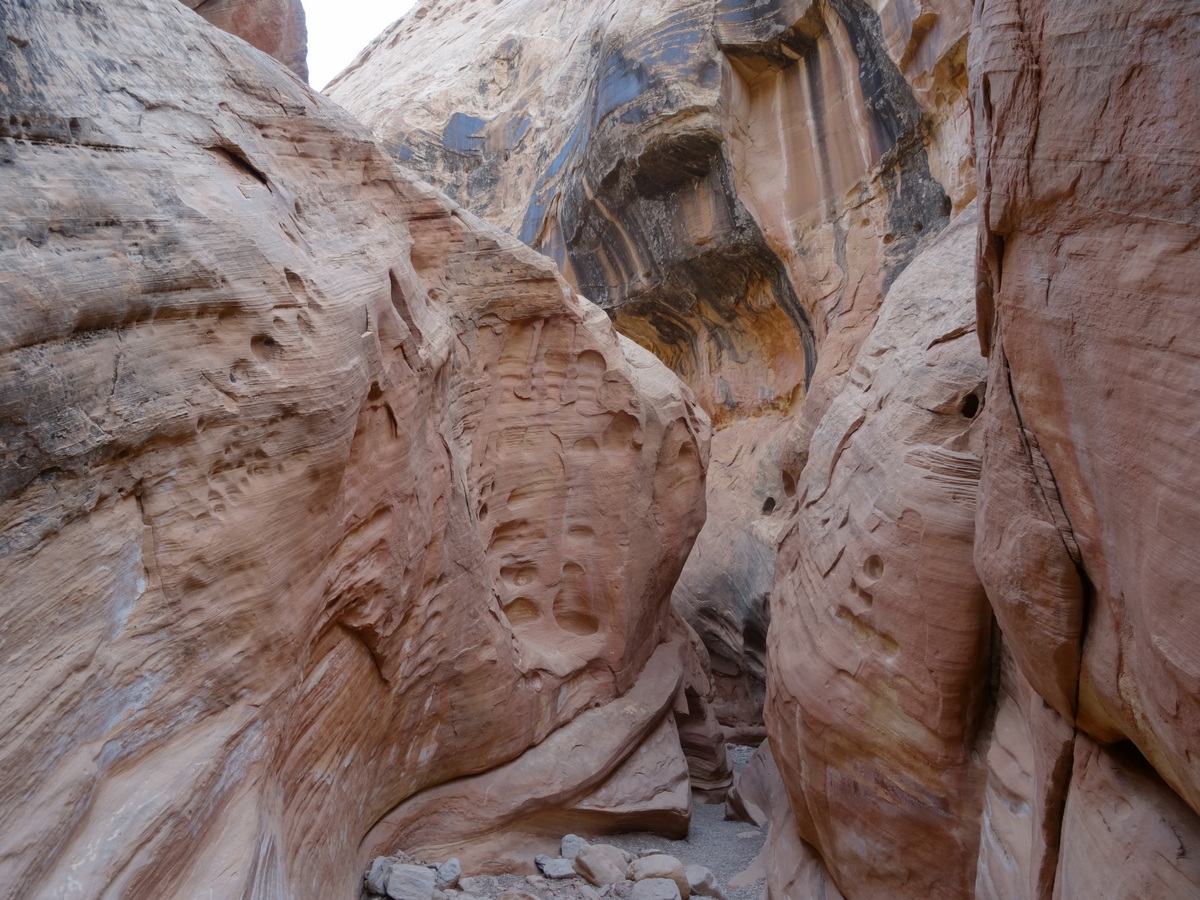
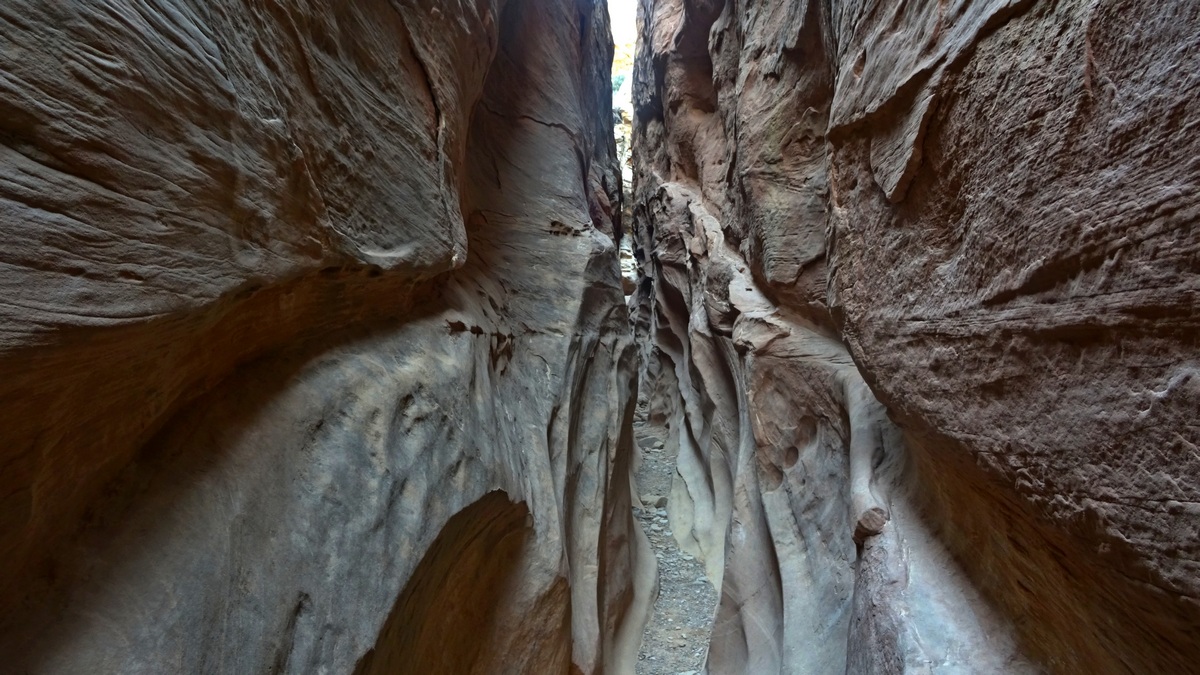
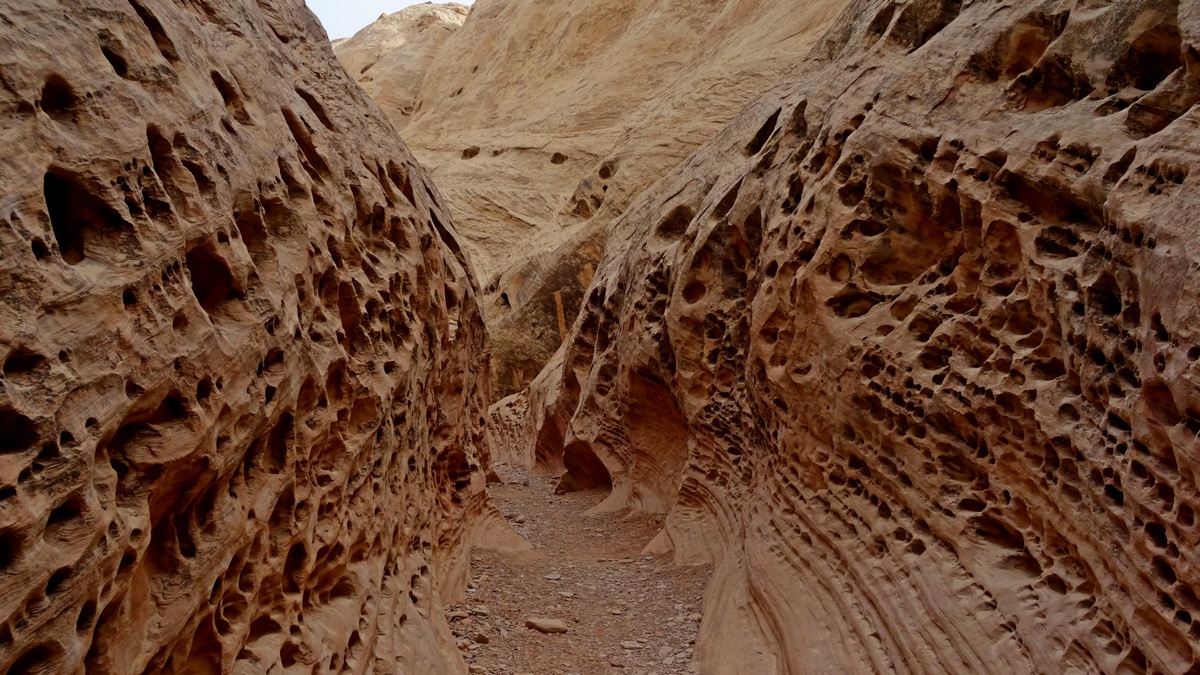
The San Rafael Swell Recreation Area was established in 2019, encompassing 217,000 acres and is administered by the BLM. This includes the canyons mentioned above and many other popular spots. At the same time fourteen wilderness areas were established. A page mentions that the BLM is considering adding thousands of miles of additional OHV (off-highway vehicle) routes, which sounds very problematic.
The wilderness areas sound pretty nice, though there are likely so many due to being separated by existing and planned roads and OHV routes. Attempts were made to designate a national monument here in 2002 and 2018.
On the recreation area page linked above there is an interactive map, though it can be confusing. Also on that page there is this link to a PDF map of Temple Mountain Recreation Area, which is pretty good, shows the Little Wildhorse/Bell canyons loop and a bunch of other routes. But this map has not been updated with the new recreation area boundaries. Whatever, it is all BLM land anyway.
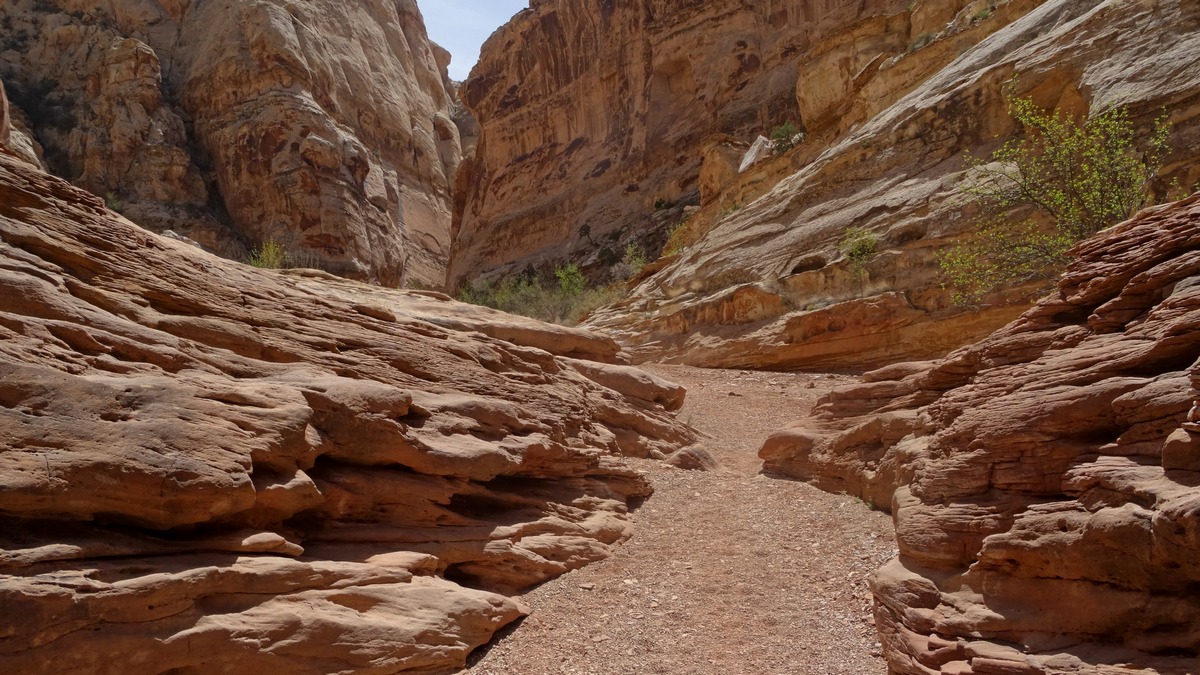
The next picture is of Wildhorse Butte, at the north edge of Goblin Valley State Park. The obvious question: is there a way up that thing? All I could find was other people with the same question; the rock is too soft for technical climbing. Not that I would have tried in any case.
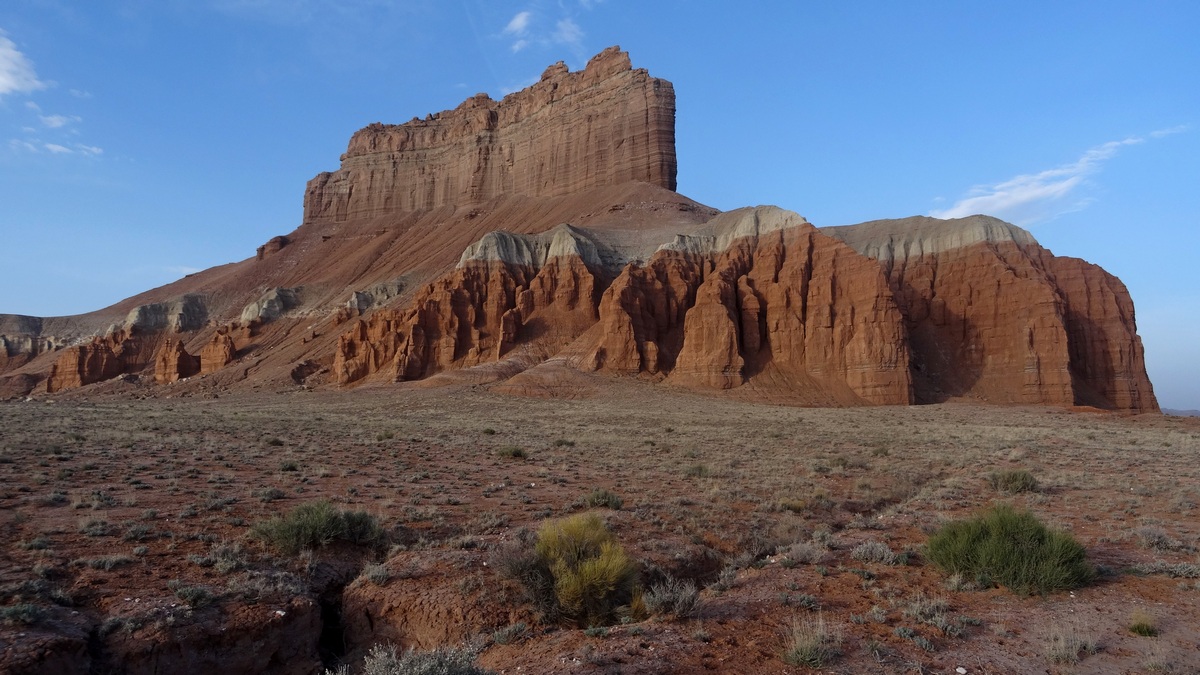
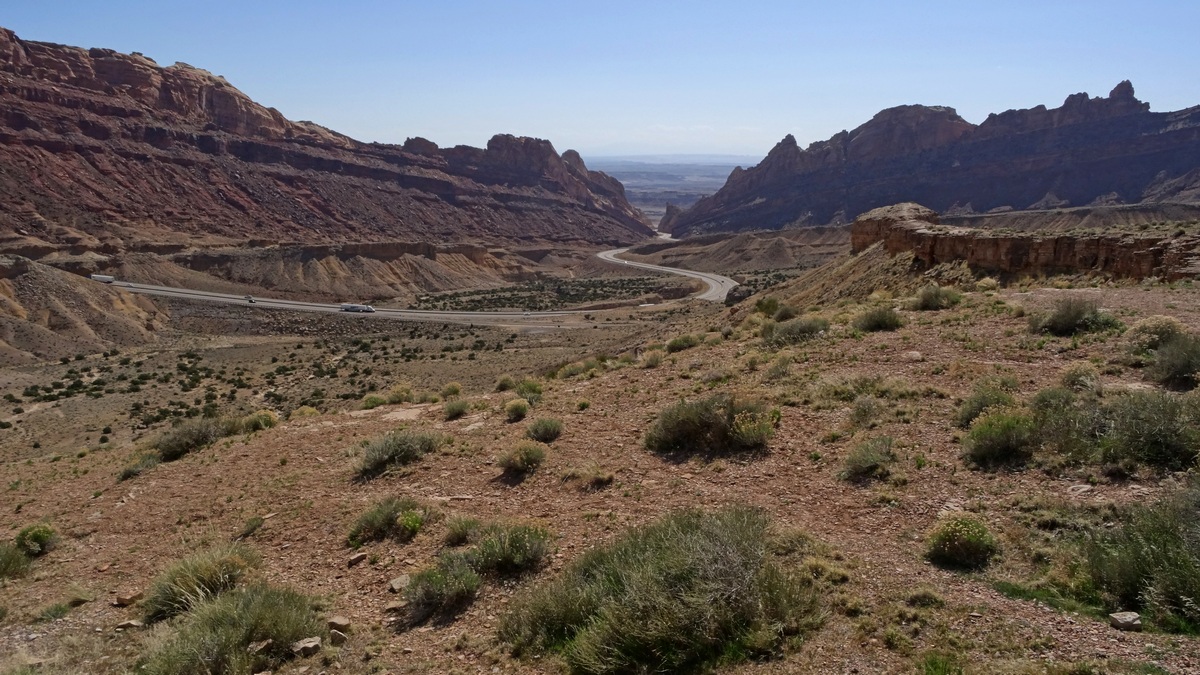
Hope at Dusk in July
My backyard’s lush and green.
The oaks form a tall church
of shade. A turks-cap stand
beckons hummingbirds. Squirrels
abound. Cicadas, doves
sound all around. Flies fall
into my wine. I fish
them out. Gnats, I just drink.
Our rains of the last weeks
belonged other places
which got our horrid heat.
Now we start to see floods.
A bee has flown into
my near-empty wine glass.
Many big books lay out
the list of global ills.
The ills are local too. Hope is in nature’s force,
in doing my part, in
knowing people are good.

Outings: The Call of the Wild
Visit the Alamo Sierra Club Outings page on Meetup for detailed information about all of our upcoming Sierra Club Outings.
The Alamo Sierran Newsletter
Richard Alles, Editor
Published by the Alamo Group of the Sierra Club, P.O. Box 6443, San Antonio, TX 78209, AlamoSierraClub.org.
The Alamo Group is one of 13 regional groups within the Lone Star Chapter of the Sierra Club.
Changed your contact information?
If you're not sure whether the Sierra Club has your current email address, send an email to Member Services with your name and address and/or member ID (see Locating Your Member ID) so they can add your email address to your member record.
Have you moved? Let us know by sending your old address, your new address and your member ID to: address.changes@sierraclub.org.
Go online for the latest news and events
 |